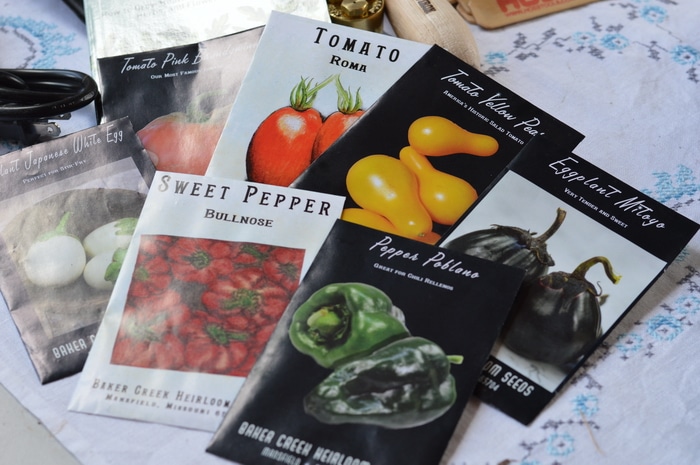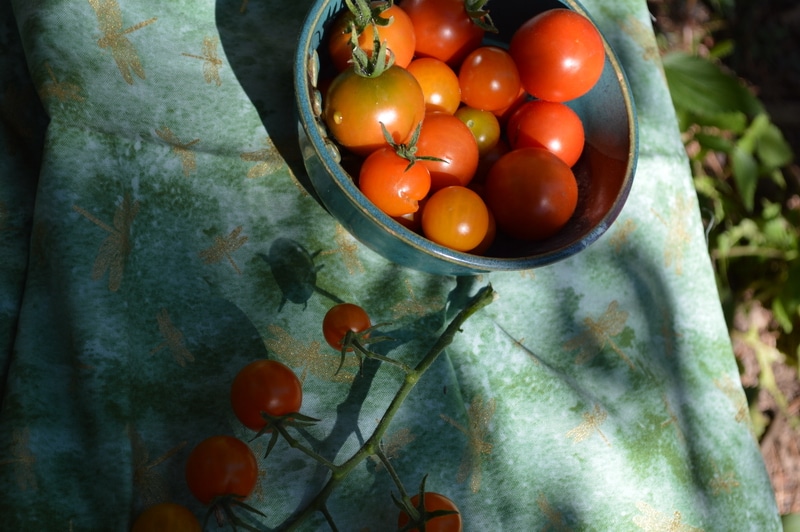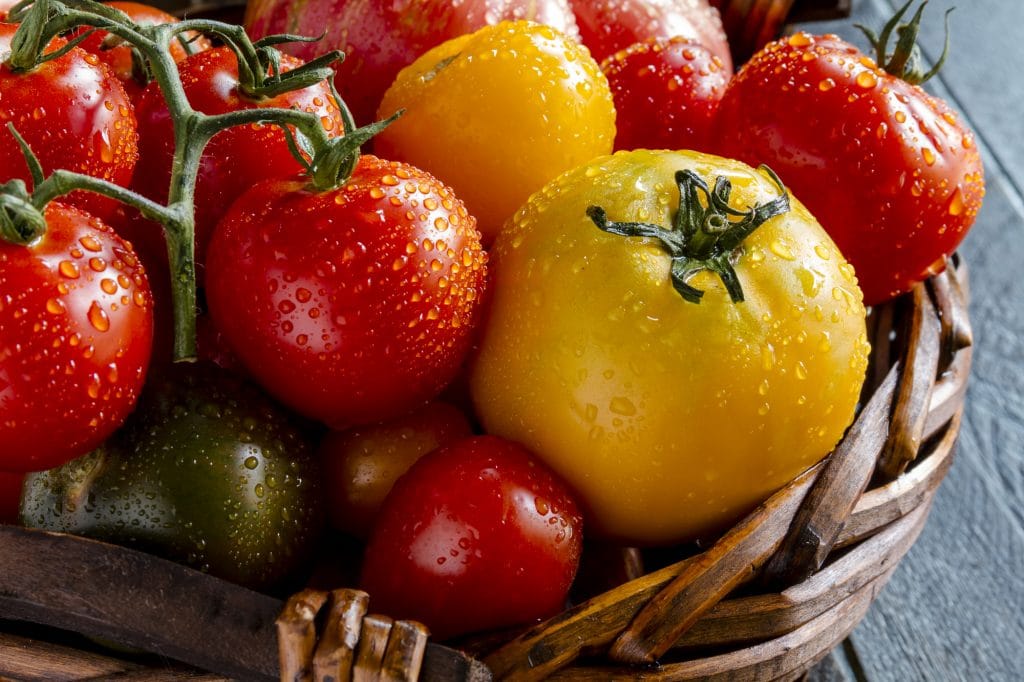Learn how to save tomato seeds in this step by step guide. Tomato seeds require a short fermentation period to remove germination inhibitors. Use this easy 7 step process to ensure that your saved tomato seeds retain optimal germination rates and you’ll never need to buy another package of tomato seeds.
Tomatoes are unique in the plant world. I bet you think I’m going to tell you that tomatoes are fruits. While it’s true that, “in 1893, the U.S. Supreme Court over-ruled Mother Nature, declaring that tomatoes were not fruits, but vegetables” (West Coast Seed), that’s not where I’m going. Knowledge tells us that tomatoes are fruits. Wisdom tells us not to use them in a fruit salad (Anon.). Enough said.

However, there is another way that tomatoes behave distinctly. Like peas and beans, they don’t require another tomato or even a bee to pollinate them. Tomatoes are self pollinating. This year, my first year with a greenhouse at Joybilee Farm, I was given 8 tomato plants by a friend. When the blossoms started coming, I simply went in daily, and flicked the flowers, gently, with my finger. The tomatoes set well and now I’m waiting for them to ripen. Even though the tomatoes in my greenhouse have been planted close together, the seeds that these tomatoes produce will be pure to their variety. I don’t have bees in my greenhouse that would cross pollinate the plants.
Seeds of Diversity Canada recommends separating field tomatoes by 20 feet to ensure purity, due to the odd flower being pollinated by insects. (How to Save Your Own Vegetable Seeds. Toronto: Seeds of Diversity Canada, 1996.) If you have an ideal climate for growing tomatoes this is a good plan. If you have a cooler climate, like I do, you can still save your own seed, though, for personal use.

Open pollinated, heirloom tomato seeds are expensive. Many seed companies count out a tiny number of seeds per package and charge a premium for these heirlooms. Priced anywhere from $3 to $5 for a mere 12 seeds, heirloom tomato seeds are like gold.
Tomatoes grow their seeds in a gelatinous case. The outside of the seed has germination inhibitors as well, so you can’t just scoop the seeds, dry them, and expect a bumper crop the next season. When you are trying to save tomato seeds you have to get rid of this gelatinous case and then dry the seeds before saving them. The technique is easy to learn and once you’ve tried it, you won’t ever have to buy another package of tomato seed.
This is a great home school or classroom experiment, too, that can be continued in Spring by growing tomato plants from the saved seed with your budding botanists students, so don’t hog all the fun.
1. Begin with heirloom, open pollinated tomatoes rather than hybrids.
While you can save seeds from hybrid tomatoes, the seeds will not grow true to the hybrid but will take after one or the other parent. Most tomatoes sold in the store are hybrids. Heirloom tomatoes have traits that make them better tasting and more suitable to certain uses but inhibit their keeping qualities. Some stores do sell heirloom tomato types now, and you can source heirloom tomatoes from some farmer’s markets as well.
Grab some heirloom tomatoes at your farmer’s market and beg a few off a neighbor whose growing them. You’ll need at least 3 tomatoes of the same variety for this experiment. Overripe tomatoes are ideal for this but vine ripened work as well. Also, see this post for tips on growing the best heirloom tomatoes so you can save them for seed.
If using your own tomatoes, chose strong parent plants that grow vigorously for you. Take early ripening tomatoes if you’re in a cool climate, or have variable weather, take later ripening tomatoes to encourage a longer tomato season.
2. Separate the seeds with the gelatinous coating into a container.
Take out the seeds and put them in a small dish, or small jar. To do this, cut the tomato into eighths and using your thumb, scoop out the gelatinous juice that encases the seeds into the dish. Don’t try to separate the seeds from the liquid. Use a separate dish or jar for each tomato variety. Label the dishes so that you don’t get confused.
3. Set the dish aside.
Only add water if the seeds are beginning to dry out.
4. Wait for 2 to 4 days.
A mold will begin to develop that eats away the gel coating on the seeds. This process destroys germination inhibitors that are present on the seeds and is necessary for good germination the following season. It also destroys seed borne diseases. Allow the mold to develop for no more than 4 days. Longer and the seeds may begin to sprout. Avoid sprouting the seeds during the fermentation process.
5. Strain and clean the seeds.
Empty the contents of the container into a fine sieve and run cold water into the strainer. Swish the contents gently with your hand. The pulp will wash through the mesh and the seeds will clean.
6. Dry the seeds.
Label a paper towel with the variety and put the rinsed seed on the paper towel to dry. Place paper towel with seeds on a paper plate for a sturdier drying base. These will be clean seeds.
7. Package and label.
Once the seeds are fully dry, package and label with the variety and the year. Fully cured tomato seeds are dull in color and will bend when pressure is applied with your fingernail. Plant these seeds next year for your heirloom varieties tomato garden. You can germination test once the seeds are cured, to make sure you have good seeds.
For storage, once seeds are fully dry you can store them in seed envelopes, in a plastic bag, in your freezer for long term storage and to preserve the germination rate. Or you can simply store them however you store your normal heirloom seeds collections.
Other resources for growing tomatoes and saving their seeds.
See the article, “How to save money buying vegetable seeds” on this blog.

Resources to help you learn more about seed saving:
Seed to Seed: Seed Saving and Growing Techniques for Vegetable Gardeners
Back to you:
What tomato varieties are your favorite? What do you do with your tomatoes at harvest time? Leave a comment:




Saving tomato seeds is a full satisfaction activity. Year after year, as I select the best plant to save seeds off, I will be developing a new strain of my own plant. It will start to take on characteristics of its own. It will adapt itself to the soil of my garden and growing conditions. These new characteristics will make this new plant stronger than any seed I would buy.